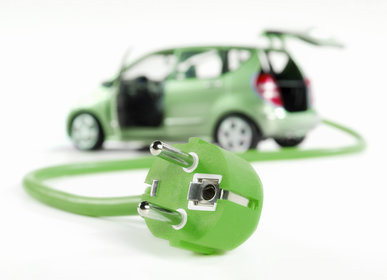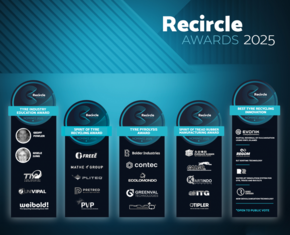
07/11/2017
Electric vehicles, still short of a true “green” revolution
Dino Collazzo
The e-mobility revolution is a growing reality. But fully sustainable vehicles mean more than just zero-emissions; suitable manufacturing processes and battery recycling are equally important. Among the issues to be dealt with, three deserve special mention.
Electric cars are the driving force behind the e-mobility revolution. But in order to promote a widespread distribution of these vehicles and talk about a truly “green” revolution, several issues remain to be addressed. Energy dispersion while assembling battery packs, use of raw materials such as lithium and cobalt – limited in quantity and often extracted with polluting methods - and a greater demand for electricity to recharge them: these are the three variables related to the production cycle of electric vehicles that, if not properly tackled, are likely to frustrate the positive effects of low emissions associated with their use.
Electrically powered cars currently circulating all over the world (including both full-electric and plug-ins) are 0.15 percent – we’re looking at 2 million vehicles on a total of 1.3 billion, according to Anfia -. But this figure seems destined to grow rapidly. According to a Bloomberg New Energy Finance research, interviewing several analysts in the industry, declining battery costs will, by 2030, lead to a drop in vehicle prices, which will account for 54 percent of new car sales worldwide by 2040. E-mobility is therefore a rapidly expanding business. But in order to win market share, the various players in the game will have to invest in research and development as well as introduce and implement new innovative ideas and resources.
The battery market
The battery market - according to Transparency market research will be worth $ 77 billion in 2024 - represents the biggest challenge awaiting the automotive world. Here is where the future, and success, of the electric car will be played, a game worth hundreds of billions of dollars and involving several players. From car manufacturers to component producers not to mention hi-tech companies looking at boosting their business opportunities in the battery market. A business that has to take into account the “environmental” contribution expected from these vehicles. In fact, if electric vehicles score considerably better than their traditional equivalent on terms of emissions, the productive chain, on the other hand, shows some flaws as far as sustainability is concerned. The first element to consider is the availability of raw materials needed to build batteries such as lithium and cobalt. Two metals (abundant the first quite rare the second) often extracted through polluting methods and in countries where human rights are not exactly a priority.
Half of the world's global lithium deposits are found between Chile, Argentina and Bolivia, while cobalt comes from the rich Congo mines. The rush to grab these metals has pushed up prices and induced mining companies to look for new deposits. Meanwhile, automakers are trying to get their hands on supplies that might soon prove insufficient. This latter aspect, sent a warning signal on the availability of adequate future supplies. However, a suitable long-term industrial vision could turn it into a great business opportunity for those who will be ready to seize it. True, Lithium mines are not depleted as yet, but if the demand should grow excessively, creating an effective recycling policy for exhausted batteries - cars, smartphones, and computers - could prove to be a lucrative intuition. For a long time now, researchers are experimenting new ground-breaking methods for salvaging lithium and cobalt.
In Italy, Cnr researchers have been able to go from metal separation treatments by means of pyrolysis - very expensive and harmful for the environment due to the release of toxic gases - to low temperature and less polluting systems, capable of saving several thousand Euro per tonne of waste. Similar experiments are being performed in other laboratories and some are even thinking of similar activities to be performed at an industrial level, based on these results. Many are innovative start-ups that could benefit from the help and support of automotive and aftermarket companies who, in turn, will have easy access to all that is needed to produce electric cars, retaining their competitiveness when natural resources will inevitably start running out.
Energy demands
A further unknown factor hovering on the future of e-mobility is whether cars will be more or less “energyvorous”. In this case we have to make a distinction between two different areas: the manufacturing phase and the cars actually being driven on our roads. In the first case, a study by Adam (French Agency for the Environment and Energy Management) explains that although e-cars can boast excellent energy efficiency when used - reducing dependence on oil and emissions – they do suffer a disadvantage, in environmental terms, during the manufacturing process. Particularly when batteries are assembled, the moment when most of the power is used to work materials at a temperature of 400 degrees. An inconvenience that several researchers have been trying to solve for a long time in order to develop synthesis techniques that act at lower temperatures.
Totally different is the impact vehicles can have when they actually move on the road. The current market penetration rates do not seem to cause problems with the energy demand needed to recharge batteries. But in a scenario where electric engines could outnumber traditional combustion units, finding solutions aimed at meeting the obvious increase in demand will be paramount. Some of these could be appropriate facilities for smart charging, efficient batteries, investment in advanced technology, renewable energy, and a more efficient energy policy. Only then we will avoid the paradox of clean and efficient electric vehicles powered by Energy coming from fossil fuelled plants.
Electrically powered cars currently circulating all over the world (including both full-electric and plug-ins) are 0.15 percent – we’re looking at 2 million vehicles on a total of 1.3 billion, according to Anfia -. But this figure seems destined to grow rapidly. According to a Bloomberg New Energy Finance research, interviewing several analysts in the industry, declining battery costs will, by 2030, lead to a drop in vehicle prices, which will account for 54 percent of new car sales worldwide by 2040. E-mobility is therefore a rapidly expanding business. But in order to win market share, the various players in the game will have to invest in research and development as well as introduce and implement new innovative ideas and resources.
The battery market
The battery market - according to Transparency market research will be worth $ 77 billion in 2024 - represents the biggest challenge awaiting the automotive world. Here is where the future, and success, of the electric car will be played, a game worth hundreds of billions of dollars and involving several players. From car manufacturers to component producers not to mention hi-tech companies looking at boosting their business opportunities in the battery market. A business that has to take into account the “environmental” contribution expected from these vehicles. In fact, if electric vehicles score considerably better than their traditional equivalent on terms of emissions, the productive chain, on the other hand, shows some flaws as far as sustainability is concerned. The first element to consider is the availability of raw materials needed to build batteries such as lithium and cobalt. Two metals (abundant the first quite rare the second) often extracted through polluting methods and in countries where human rights are not exactly a priority.
Half of the world's global lithium deposits are found between Chile, Argentina and Bolivia, while cobalt comes from the rich Congo mines. The rush to grab these metals has pushed up prices and induced mining companies to look for new deposits. Meanwhile, automakers are trying to get their hands on supplies that might soon prove insufficient. This latter aspect, sent a warning signal on the availability of adequate future supplies. However, a suitable long-term industrial vision could turn it into a great business opportunity for those who will be ready to seize it. True, Lithium mines are not depleted as yet, but if the demand should grow excessively, creating an effective recycling policy for exhausted batteries - cars, smartphones, and computers - could prove to be a lucrative intuition. For a long time now, researchers are experimenting new ground-breaking methods for salvaging lithium and cobalt.
In Italy, Cnr researchers have been able to go from metal separation treatments by means of pyrolysis - very expensive and harmful for the environment due to the release of toxic gases - to low temperature and less polluting systems, capable of saving several thousand Euro per tonne of waste. Similar experiments are being performed in other laboratories and some are even thinking of similar activities to be performed at an industrial level, based on these results. Many are innovative start-ups that could benefit from the help and support of automotive and aftermarket companies who, in turn, will have easy access to all that is needed to produce electric cars, retaining their competitiveness when natural resources will inevitably start running out.
Energy demands
A further unknown factor hovering on the future of e-mobility is whether cars will be more or less “energyvorous”. In this case we have to make a distinction between two different areas: the manufacturing phase and the cars actually being driven on our roads. In the first case, a study by Adam (French Agency for the Environment and Energy Management) explains that although e-cars can boast excellent energy efficiency when used - reducing dependence on oil and emissions – they do suffer a disadvantage, in environmental terms, during the manufacturing process. Particularly when batteries are assembled, the moment when most of the power is used to work materials at a temperature of 400 degrees. An inconvenience that several researchers have been trying to solve for a long time in order to develop synthesis techniques that act at lower temperatures.
Totally different is the impact vehicles can have when they actually move on the road. The current market penetration rates do not seem to cause problems with the energy demand needed to recharge batteries. But in a scenario where electric engines could outnumber traditional combustion units, finding solutions aimed at meeting the obvious increase in demand will be paramount. Some of these could be appropriate facilities for smart charging, efficient batteries, investment in advanced technology, renewable energy, and a more efficient energy policy. Only then we will avoid the paradox of clean and efficient electric vehicles powered by Energy coming from fossil fuelled plants.






